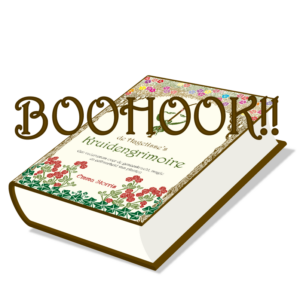Easy and effective use of medicinal herbs: infusions and decoctions

People often seem to think that the more complicated it is to get something, the more valuable it must be. This certainly doesn’t apply to the medicinal effect of herbs. Of course it’s fun to experiment with tinctures and the likes – and sometimes that is the best way to capture a certain constituent or use something all year round. However, for most plants the easiest way to use them is the most effective as well. I’m talking about infusions and decoctions. I’m talking about maceration in water.
Why we make it difficult, when it could be easy
I suspect that our fascination with more complex production procedures stems from the advance of the pharmaceutical industry. This has led many people to the idea that it has to be particularly difficult to make a medicine. In addition, due to the emergence of allopathic medicine, a lot of common knowledge has disappeared and we have learned to distrust our folk medicine. That is a great pity.
If you look at the history of medicine, we have gained quite a bit. Think of antibiotics and other ways to quickly intervene in life-threatening situations. But we have also lost a lot. Our ability to read and understand our own bodies and to treat ourselves, for example.
The effect of a plant is more than the sum of its ingredients
There is more. I get the impression we went overboard a bit. We now regularly turn to remedies that are sometimes worse than the disease. For example, we really didn’t need aspirin for pain relief. We were able to arrange that ourselves by making a simple out of willow bark. And we could use that without the need for stomach protecting medication.
The pharmaceutical industry still hasn’t quite cracked the nut of the synergistic effect that all constituents of a plant have together. Our scientists are able to isolate and standardise a single ingredient and can sometimes even chemically imitate constituents. But they still haven’t managed to imitate the effect of a plant in its entirety – which is often more effective than the sum of its ingredients would suggest.
Water: still the most effective way to draw healing power from plants.
But I digress. We talked about medicine and our fascination with flasks, pipettes, distillation and the likes. My favourite way to enlist the help of my plant allies is still the simplest: brewing a medicinal infusion or tea. Or a decoction or decoct, if the material used needs a little more persuasion, such as bark or root. You can’t keep the resulting potion for too long, but it’s still the most effective way to make a medicine out of a plant.
After all, water is the best and broadest working menstruum available to us. Just about any ingredient can be caught in water if you have a little patience. Because the composition of the water changes as an infusion is steeping longer, other components are successively dissolved in the liquid. And if we add heat to it, we can extract the even more difficult-to-access constituents from the plant.
Maceration in water offers medicinal potency when used properly
But please note: although I often use the words infusion and tea interchangeably, a medicinal infusion or tea is more than throwing a tea bag into a cup of boiling water. There is more to it than making a simple cup of tea. And a medicinal decoction is more than just boiling a plant for a while. You must take into account the characteristics of the constituents that you are trying to dissolve.
Still, it isn’t really complicated to make a potent infusion or decoct. With some simple tips and tricks you too will become a master medicine brewer. We’re going to discuss these in the next blogs in this series. We’ll start with the medicinal infusion, which I’ll be writing about next time. One thing I can already reveal… I won’t be using a tea egg like the one on the photo. Those I only use for a ‘regular’ tea. 😉




